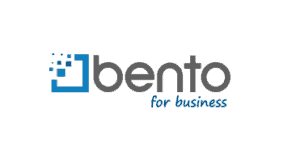What are ghost cards?
Ghost cards are credit card numbers that can be assigned to individual departments within a company. Any employee who works in a department with an assigned ghost card can use the number to make purchases. When ghost card payments are made, they are charged back to the individual departments. A ghost card may refer to ghost debit, ghost credit, or ghost prepaid cards.
Mid- to large-sized companies may use ghost debit cards. Like ghost credit cards, ghost debit cards are numbers that are assigned to individual departments. Instead of purchases being added to the businesses’ lines of credit, ghost card payments are subtracted from the companies’ account balances.
These types of cards offer several benefits to companies, including the following:
- Make tracking by the department simpler
- Can be used to automate expense management workflows
- Automate invoice processing
- Can be assigned to high-volume suppliers so that expenditures with them can be tracked
Where can I get a ghost debit card?
If you are wondering where to get a ghost card, ghost debit cards are offered by card issuers as a service to business customers. These cards are virtual, which means that they are not plastic. Instead, they are randomly generated credit card numbers that represent a company’s debit account. Ghost debit and ghost prepaid cards are different. Debit cards subtract money from the deposit account while prepaid cards are limited to the balances on the cards and are not linked to an account.
Card issuers and financial institutions that specialize in the needs of their business clientele may offer ghost charge debit cards to their customers. When you generate ghost numbers, you can decide how long they will last. They can be assigned to individual suppliers or to departments for purchases on an ongoing basis. You can also turn them off in between times when purchases are needed.
To reload money on a ghost card, you can simply log into your card dashboard on your smartphone, tablet, or laptop. You can then decide how much money to make available on your ghost debit card and initiate a digital transfer from your attached deposit account.
How is a ghost debit card different from a ghost credit card?
Ghost debit cards have several important differences from ghost credit cards. Debit cards ghost transactions do not add to your debt and are subtracted from your existing balances. By contrast, ghost credit card transactions are added to your balance on the linked revolving line of credit. This means that they add to your debt and might incur interest.
A ghost debit card can also help you to track spending across your company. You can assign an individual ghost number to each department and restrict its use to purchases that are needed by each department. For example, your IT department might be able to charge computer equipment, peripherals, and software products.
The ability to track and automate expense management workflows is a benefit that you can derive from a ghost debit card that might not be available to you with a ghost credit card. You can see the departmental expenses in real time from your dashboard and address any problems that you identify quickly.
Reduce invoices and reimbursements with ghost debit cards
Ghost debit cards can help to reduce invoices, automate invoice processing, and end reimbursements at your company. When you assign ghost numbers to departments, you can eliminate reimbursements entirely. Instead of asking your employees to spend their own money to purchase needed items, they can simply charge them to their departments’ ghost card.
Invoices can also be reduced. You can assign a ghost number to a high-volume supplier. The supplier can simply charge orders to the ghost card without needing to send an invoice for everything. Visa ghost cards allow you to set spending limits and offer other controls.
You can turn the ghost cards off when your business is closed or between orders from specific suppliers. You can restrict the available amount to the specific amount needed to purchase an item. The cards can also be restricted for use at preferred merchants, and certain categories of purchases can be restricted.
These features are beneficial for both employees and employers. Employees can spend less time tracking their expenses and completing expense reports. Accounting staff can avoid the drudgeries of manual data entry and create detailed reports with a click of a button. Employers can enjoy improved spending transparency, better tracking, and the ability to plug expense leaks and to prevent fraud.
How Visa ghost cards can be generated
Visa ghost cards can be generated in two different ways. You can generate the Visa ghost cards that you need by contacting your card issuer and requesting the cards through an application or website. The card issuer will then generate the numbers for you and send them to you.
Another way to generate ghost debit cards is with an application programming interface or API. An API is a set of protocols that a developer can integrate with your software. You can then create ghost charge debit cards within your applications instantly.
Who uses ghost debit cards?
Ghost debit cards are generally used by larger companies while virtual cards may be used by companies of all sizes. The difference between a ghost card vs virtual card is that ghost numbers may be used to complete transactions on an ongoing basis by the department.
While a ghost card vs virtual card is a type of virtual card because both are not plastic, a virtual card generally refers to a ghost number that is generated for single-use purposes. Once it is used, it expires and will no longer work.
Why good employee expense tracking is important
It is important for your company to have sound expense tracking mechanisms in place. If you do not have strong tracking measures and expense controls in place, you might be unaware of where your company is at financially, and your expenses can spiral out of control.
Expense management includes the various systems that you have in place at your business to manage and track your expenses. Your expense management system should start with a clearly defined expense policy. You should train your employees on your expense policy before you begin using the ghost numbers. This can help them to understand your expectations and what types of purchases they can make. With the available controls from your card issuer, you can include the restrictions from your expense policy on the cards so that there is little room for error.
What are the features that you should expect in a ghost debit card?
Choosing a ghost debit card involves more than simply learning how to get a ghost card. You should also look at the features and the offers that are available to make certain that you are choosing a good ghost debit card supplier.
Good ghost cards should provide you with extensive expense controls. The cards should allow you to restrict how the cards can be used by each department and its employees. You should be able to restrict the cards to only be used at your preferred suppliers and to restrict specific categories of spending. Finally, a good ghost card supplier should allow you to turn the cards on or off whenever you want from your smartphone.
How a ghost debit card compares to using cash or checks
A ghost debit card is a much safer option than using credit cards, cash, or checks. While ghost debit cards offer extense expense control features, petty cash and checks are easy to target for fraud. A ghost charge on debit card can be seen in real time on your dashboard. The transaction information for a ghost charge on debit card is automatically imported into your accounting software.
By contrast, cash systems may not be reconciled until the end of the month, making it unclear what happened if cash is missing. A ghost card credit card may not have the transactions reviewed until the monthly statement arrives. Similarly, checks may be targeted for fraud by writing two checks, making fraudulent invoices, and other ways. A ghost card can eliminate the need for these types of systems so that you are more protected.
How segmenting purchases by category or department is easy with ghost cards
Ghost numbers can easily allow you to segment purchases by the department or by category. You can set individual budgets for each card and assign individual spending categories to different departments.
You can also restrict the individual numbers to the categories of purchases that you have authorized. Since the ghost numbers are debit cards and not credit cards, you will not be charged interest on the balances on your cards.
How ghost debit cards can help to reduce your risk of business fraud
A ghost debit card can also reduce your risk of fraud. For example, you can generate a ghost number to be used with a new supplier that you do not trust. You can restrict the available amount to something specific. For example, if you are ordering an item that costs $149.50, you can restrict the card to exactly $149.50. If the supplier tries to run the number for $160, it will not work.
You can also set the number to expire as soon as it is used. If the supplier tries to use the number later to charge something else, it won’t work. The ghost numbers also cannot be used to access your deposit accounts or your confidential information.
Where to find ghost cards
Now that you understand what is a ghost card, you might wonder where to find them. Leading business debit card issuers like Bento for Business offer ghost debit cards to their customers as an added service. Businesses are able to generate as many ghost numbers as they need through an application or via a ghost card API.
Like the other business debit card products, the ghost card numbers offer the same extensive controls, including the ability to restrict their use by location, time, category, and merchant. Businesses can also turn individual cards off or on remotely at any time of the day. Try a free 60 day trial by signing up or learn more, by requesting a demo or calling us at 866.220.8455.






